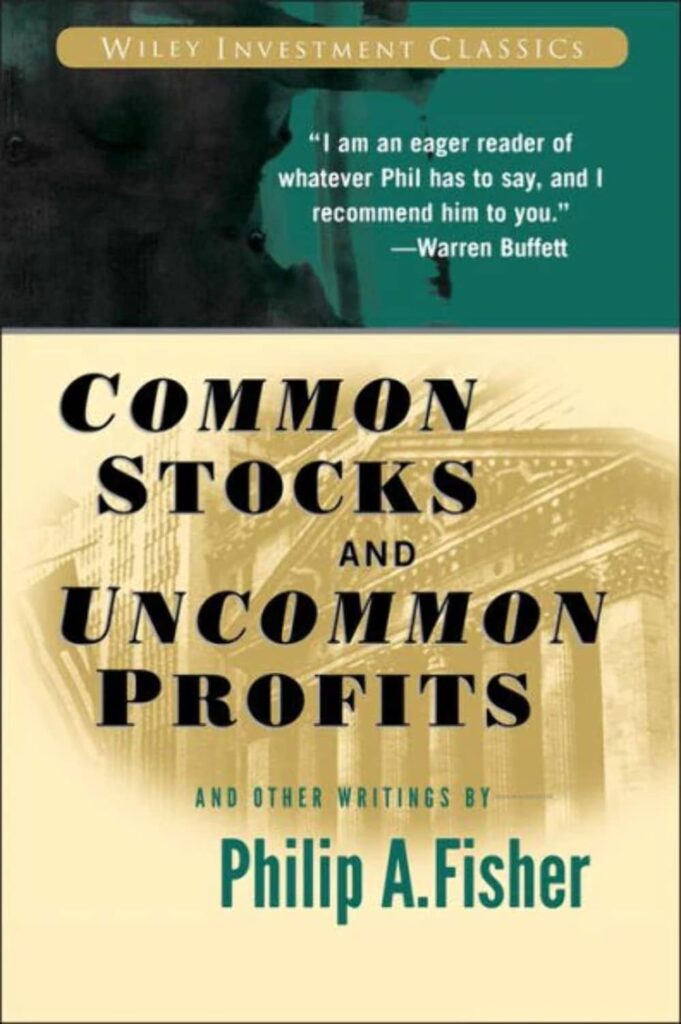Five don’ts for investors: Philip Fisher
Common Stocks and Uncommon Profits by Philip Fisher lists five don’ts for investors
1. Don’t buy into promotional companies
All too often, young promotional companies are dominated by one or two individuals who have great talent for certain phases of business procedure but are lacking in other equally essential talents. They may be superb salesmen but lack other types of business ability. More often they are inventors or production men, totally unaware that even the best products need skillful marketing as well as manufacture.
Their financing should be left to specialised groups. Ordinary individual investors should make it a rule never to buy into a promotional enterprise no matter how attractive it may appear to be.
2. Don’t ignore a good stock just because it is traded “over the counter”.
From the standpoint of marketability, a well-known, actively-traded stock on the New York Stock Exchange has advantage over the better over-the-counter stocks. But the better of the over-the-counter stocks are frequently more liquid than the shares of many of the companies listed on the American Stock Exchange and the various regional stock exchanges. “In short, so far as over-the-counter securities are concerned, the rules for the investor are not too different from those for listed securities. First, be very sure that you have picked the right security. Then be very sure that you have selected an able and conscientious broker. If an investor is on sound ground on both these respects, he need have no fear of purchasing stock just because it is traded ‘over the counter’ rather than on the exchange.”
3. Don’t just buy a stock because you like the “tone” of the annual report
Allowing the general wording and tone of an annual report to influence a decision to purchase a common stock is much like buying a product because of an appealing advertisement on the billboard.
4. Don’t assume that the high price at which a stock may be selling in relation to earnings is necessarily an indication that further growth in those earnings has largely been already discounted in the price
Philip Fisher uses a fictitious company XYZ to highlight a costly error in investment reasoning. XYZ has qualified magnificiently for years in regard to Philip Fisher’s 15 points (Philip Fisher’s “Fifteen Points to Look for in a Common Stock”)). The stock has sold for years from 20 to 30 times current earnings as the financial community appreciated XYZ’s excellence in terms of constant growth in sales and profits. This is nearly twice as much for each dollar earned as the sale price of the average stock that has made up, say, the Dow Jones Industrial Averages.
Now XYZ has just issued a forecast indicating it expects to double earnings in the next five years. On this basis, some investors jump to the false conclusions that since XYZ is selling twice as high as stocks in general and since it will take five years for XYZ’s earnings to double, the present price of XYZ is discounting future earnings ahead and is therefore overpriced. The fallacy in the reasoning here lies in the assumption that five years from now XYX will be selling on the same price-earnings ratio as will the average Dow Jones stock.
If XYZ continues its same policies, five years from now its management will bring out still another group of new products that will swell earnings. If this happens, why shouldn’t this stock sell five years from now for twice the price-earnings ratio of the more ordinary stocks as it is doing for now and has done for many years past? This is why some of the stocks that at first glance appear highest priced may upon analysis, be the biggest bargain, said Philip Fisher.
5. Don’t quibble over eights and quarters
Here Philip Fisher uses a real example. A gentleman who has demonstrated a high order of investment ability wanted to buy 100 shares of a stock that was trading at 35.5. He put his order in at 35 as he wanted to save fifty dollars. The stock never sold again at 35. Twenty-five years later, it was selling at over 500. In an attempt to save fifty dollars, the investor failed to make at least $46,500.
